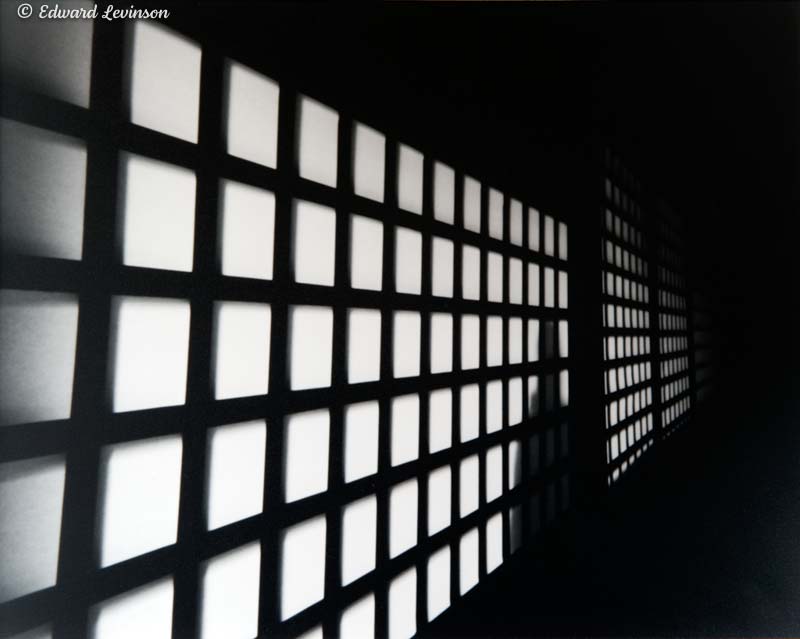During the 1990’s when I visited Kyoto on photo trips, I often stayed with an American friend who lived just across the street from Shisendō, the famous poets’ retreat temple on the north side of Kyoto. As a photographer and poet, I have always seen Shisendō as a favorite place to visit in Kyoto. The small hermitage established in 1641 is situated on a hill, the building and garden meticulously maintained.
The privately owned primitive rental bungalows across the street, with their thin clapboard wood siding and close-to-the-elements airy environment, somehow seemed just as close to the hermit poets’ hillside experience, especially the humble poorer ones that we often hear and read about. Rattling windows and doors, outside air streaming in, and of course mildewy with mosquitoes in the rainy season and summer – all may inspire poetry if you are lucky.

One fall morning while staying there in 1993, I ventured further up the road into the mountains past Shisendō. Near the top is Tanukidani Fudō-in Temple and along the way there, passing through Tanukidanijizoson, some graveyards, tanuki (racoon-like) figures and Buddha statues. I had just recently begun using my wooden box pinhole camera and found many images that I would later call and include in my series “Sacred Japan – Myth or Reality”. As many who live in or study Japan know, there are often paradoxes and ironies that don’t always mesh with the traditional sense of sacred places. Too much new concrete, various flags cluttering the way, loudspeakers asking you to be quiet and other such things. It is often a dilemma for photographers and writers.
On this particular morning walking up, I came across an interesting statue that seemed to have a story to tell. It was cloudy and dark in the woods, making for a difficult long exposure using a tripod. The plus side for these long exposures is that I get to commune with the subject while the shutter is open capturing the image on film. Its a bit of bonus meditation time. Later at home, when I developed the film and made some prints, here was this imposing figure who I named Forest Sage.

By 1997, I eventually I had enough images in this series to hold their debut exhibition in Kyoto. We used this image on the invitation DM postcard. In town for hanging the exhibition and the opening, lodging again at the Shisendō bungalow, I ventured up the road to pay my respects, say thanks to “sensei” and to say a prayer that the show would be successful. I hadn’t visited him since I took the photo in 1993. To my great surprise it was a very small statue, not life size as I remembered it, but something like a big doll. Most people would likely walk past him and not really notice. But for me he was and still is a big influence.
As of early spring 2017, “my” bungalow was still there, though my friend had moved on, someone was still renting the place. It was nice to see that not everything had changed. And of course, Shisendo which I visited on that trip when making my pinhole film about Kyoto, was still looking and feeling peaceful in the afternoon light.

Now on most of photo/filming to trips to Kyoto I stay at economy business hotels for a neutral home base, the small rooms, sometimes in a quiet place, sometimes in the thick of things along the Takasegawa canal, offer a different kind of retreat from my everyday country life in the “other Kamogawa” on Chiba’s Boso Peninsula. At night I lay on the hotel bed, stare at my wide-open paper map of Kyoto with my red-circled areas and wait for an inspiration on where to go the next day. I generally pick just one area to concentrate on as my visual creative methods are slow moving. I can easily spend two hours at one temple or shrine or beside one of the rivers or streams, before I move on to the next place. And importantly, I tend to visit the same places over and over again, then find pleasure discovering some hidden corner I have never been before.

A few years after meeting up with Forest Sage, I again found myself up the mountain in the woods somewhere behind Tanukidani Fudō-in Temple. I came across a simple wooden shrine. Not so inspired to make an image, I went further into the woods behind the shrine to find some nature energy as I often do. It was late morning and I had been on the road for a few days. I laid down on the ground in the sun to rest and just enjoy the place without the camera or pen and paper. Nearly 20 years later in the woods behind my own house I occasionally repeat this retreat practice, which finally inspired a poem. It has nothing per se to do with Kyoto, but it easily fits with the Shinto or Zen spirit of “Sacred Japan”. It is certainly no accident that this series and theme started in Kyoto. I continue to search for both the myth and the reality.
On the Ground
A snake on the ground
tree roots curling
up and down
a log on the forest floor
prostrating to the universe
connecting
as birds twittering here and there
pay me no mind
could care less if
I am here or not
if I rot or not into the Earth
and feed these trees
adding to this bed of leaves
upon which I lay my bare head
with humble desire and honor
to touch Oneness.
============================
References:
“Sacred Japan” Gallery
Edward’s Essay/Memoir book website
More writings by Edward on Pinhole Photography
